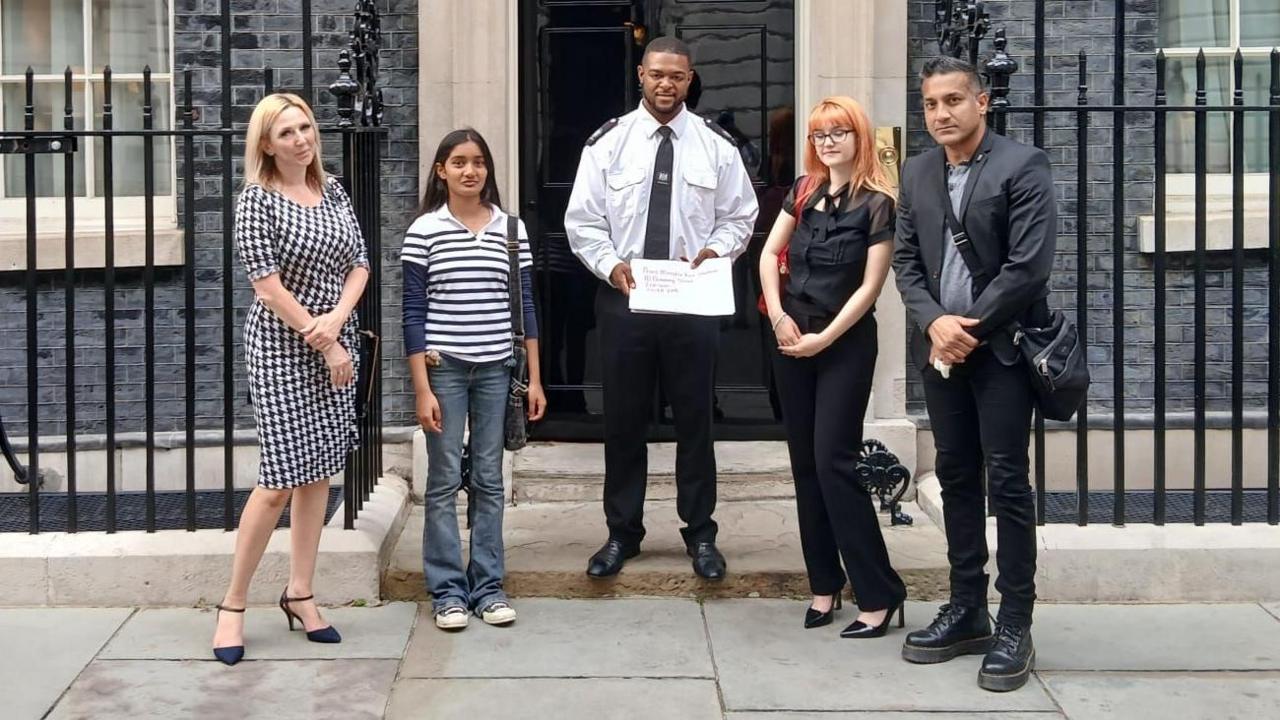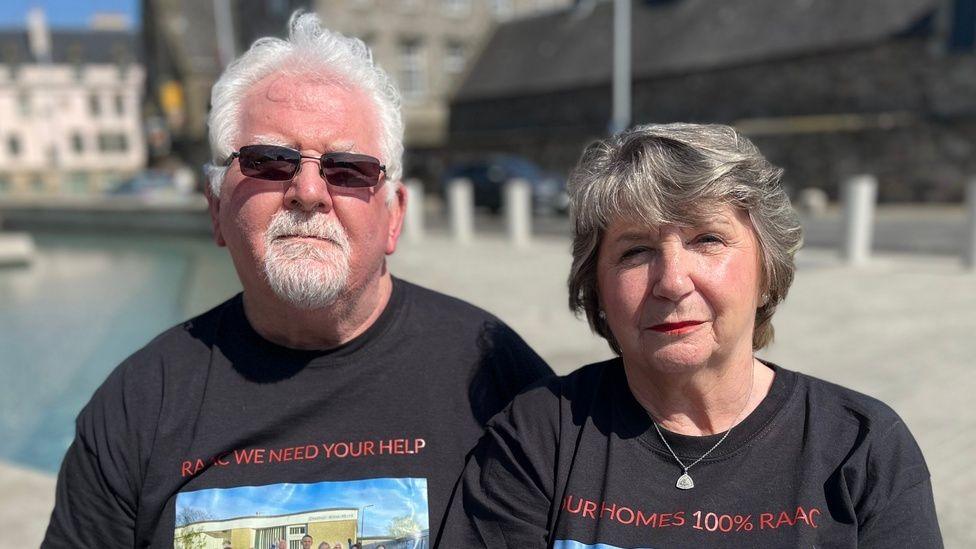Families protest over Raac homes worth 'peanuts'

Hannah Chowdhry was told her home should be demolished over the presence of Raac
- Published
Campaigners protesting at Holyrood have said they will be left with homes worth "peanuts" after the discovery of Reinforced Autoclaved Aerated Concrete (Raac).
Aberdeen law student Hannah Chowdhry, 20, bought her house in the Balnagask area of Torry last year, but months later was “devastated” to learn that concrete in the roof panels was potentially unsafe.
She has been told by Aberdeen City Council that her house, alongside homes of hundreds of other families in the area, should be demolished.
A petition calling for better financial support and government accountability, launched by Hannah and her father Wilson, is being considered by MSPs.

A petition by Hannah and her father Wilson is to be debated in Holyrood
Hannah is one of thousands of people across Scotland whose homes are affected by Raac - a less durable form of concrete that is susceptible to collapse.
She bought her four-bedroom house in June 2023 for £120,000.
It had originally been a council house which was built in 1965, although she purchased it from a private owner.
In November last year, Hannah was told that Raac been found in the roof of her new home, making it potentially structurally unsound and, without repair, illegal for resale.
It was one of an estimated 138 private properties and 366 council homes in the Balnagask area which were found to have Raac in the roof panels.
'Insurmountable debts'
Aberdeen City Council has since announced plans to demolish the council homes affected “on safety grounds”, with council tenants being offered first refusal on a replacement home matching their needs.
The council said they would also aim to buy private properties by voluntary agreement to allow demolition across the affected area, and said they would offer market value for the properties, alongside other legal, home-loss and disturbance payments.
But Hannah's father told BBC Scotland News the council only intends to offer residents the "post-Raac" market value of their homes.
Wilson, who founded the UK Raac Campaign Group, said the council would also deduct the cost of repairing the roofs, which in Hannah's case comes to more than £70,000.
He said residents would be left with "insurmountable debts" if the council did not offer them a better price, with many living in fear of bankruptcy and homelessness.
Aberdeen City Council previously told BBC Scotland News that owners would be offered the current market value along with "reasonable legal costs, and home loss and disturbance payments".
A spokesperson said: “Private, owners and tenants are being offered rehoming support.”

The campaign has also been taken to 10 Downing Street
The petition, which has more than 1,600 signatures, urges the Scottish government to provide better support for communities which have been affected by Raac, including private homeowners.
It calls on the Scottish government to:
Set up a national fund to assist homeowners and tenants affected by Raac.
Initiate a public inquiry investigating the practices of councils and housing associations concerning Raac.
Introduce new or updated legislation to ensure that developers, councils and housing associations are held accountable for using substandard property materials; mandate risk disclosure and make surveyors and solicitors liable for untraced defects.
The petition also asks for a comprehensive register of high-risk buildings in Scotland.
What is Raac?
Reinforced autoclaved aerated concrete is a lightweight material that was used mostly in flat roofing, but also in floors and in walls between the 1950s and 1960s.
It is a cheaper, less durable alternative to standard concrete and has a lifespan of about 30 years.
Crucially, it is susceptible to structural failure and collapse when exposed to moisture.
It has been found in thousands of buildings across Scotland, including homes, schools and hospitals, sparking fears across the country.
Raac has been identified in council areas, including Dundee, West Lothian and Clackmannanshire, and is estimated to affect 2,445 homes owned by social landlords, according to a report , externalby the Scottish Housing Regulator.
Council tenants are currently having their Raac repair costs covered.
But many people who have bought their council houses said they felt abandoned by the government, with some facing repairs costs into the tens of thousands.
Related topics
- Published19 September 2023

- Published11 May 2024

- Published30 September 2024
